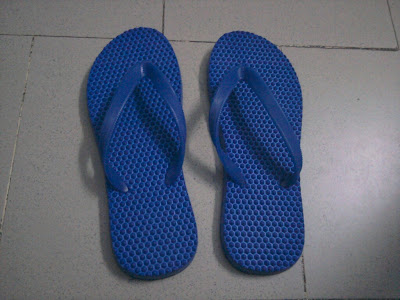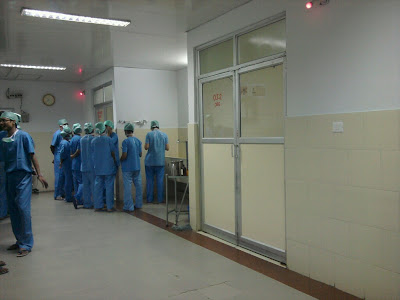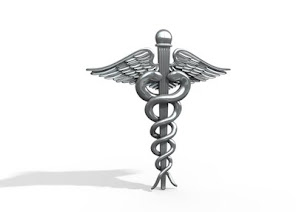
Must see post
From left to right:
1. Acromegalic facies
2. Adenoid facies
3. Amiodarone facies
4. Bell's palsy
5. Bird facies
6. Asymmetric crying facies
7. Bovine facies
8. Chipmunk facies
9. Cushingoid facies
10. Elfin facies
11. Gargoyle facies
12. Leonine facies
13. MEN-2B Syndrome
14. Parkinsonian facies
15. Flat facies
16. Mitral facies
17. Hatchet facies
18. Snarling facies
19. Thyrotoxic facies
20. Myxedematous facies
Acromegalic facies (Acromegaly)
Large supraorbital ridge and frontal
bossing, thickened lips, enlarge
tongue, lower jaw firm and square
(protruding jaw = prognathism)
Adenoid facies (Adenoid
hypertrophy)
Long, open-mouthed, dumb-looking
face of children
Amiodarone facies
Deep blue discoloration around malar
area and nose
Bell’s palsy (Facial nerve
dysfunction)
The eyelids on the paralyzed side can’t
close. The mouth is drawn to the
unparalyzed side, producing a
somewhat grotesque appearance.
Food and drink dribble from the
mouth on the paralyzed side. The eye
with the involved lid dries due to
decreased tear production.
Bird facies (Pierre Robin
Malformation)
Small lower jaw, a slit like hole in the
palate of mouth (called cleft palate)
and the tongue appear to fall into the
throat (condition called as
retroglossoptosis)
Assymeteric crying facies (Cayler
cardiofacial syndrome)
Asymmetric appearance of the oral
aperture and lips at rest, but
significant depression of one side of
the lower lip with animation (crying or
smiling)
Bovine facies (Craniofacial
Dysostosis or Crouzon syndrome)
Convex nasal profile, shortened
mandible, macroglossia
Chipmunk facies (B-Thalassemia
major, Bullimia nervosa, Parotid
swelling)
Expanded globular maxillae, with BM
hyperexpansion into facial bones,
combined with prominent epicanthal
folds
Cushingoid facies (Cushing
syndrome)
A rounded face with a double chin,
prominent flushed cheeks, and fat
deposits in the temporal fossa and
cheeks
Elfin facies (William’s Syndrome)
Sunken nasal bridge, puffiness
around eyes, epicanthal fold, blue
starry eyes, long upper lip length,
small and widely spaced teeth, small
chin
Gargoyle facies (Hurler syndrome)
Head is large and dolichocephalic,
Tywith frontal bossing and prominent
sagittal and metopic sutures, with
mid-face hypoplasia, depressed nasal
bridge, flared nares, and a prominent
lower 1⁄3 of face, thickened facies,
widely spaced teeth and attenuated
dental enamel, gingival hyperplasia
Leonine facies (Lepromatous
Leprosy)
Peculiar, deeply furrowed, lionlike
appearance of the face
MEN 2B Syndrome
Usually there are numerous
yellowish-white, sessile, painless
nodules on the lips or tongue, with
deeper lesions having normal
coloration. There may be enough
neuromas in the body of the lips to
produce enlargement and a
“blubbery lip” appearance. Similar
nodules may be seen on the sclera
and eyelids.
Parkinsonian facies (Parkinsonism)
Mask-like, tremor of head, absence of
blinking, dribbling of saliva, weakness
of upward gaze, seborrhoea and
sweatiness
Flat facies (Down syndrome)
Flat appearing face, small head, flat
bridge of the nose, smaller than
normal, low-set nose, small mouth
which causes the tongue to stick out
and to appear overly large, upward
slanting eyes, epicanthal fold,
rounded cheeks, small misshapen
ears
Mitral facies (Mitral stenosis)
Rosy, flushed cheeks and dilated
capillaries
Myotonic or Hatchet facies
(Myotonic dystrophy)
Tented, open mouth, elongated face
and blunt affect
Snarling or Myasthenic facies
(Myasthenia gravis)
Drooping of the eyelids and corners of
the mouth and weakness of the facial
muscles
Thyrotoxic facies (Grave’s disease)
Alert, startled, flushed and anxious
appearance. Protrusion of of one or
both eyes (exopthamlos) associated
with retraction of the upper eyelids
(lid lag) which results in the exposure
of white conjunctiva above the cornea
(Von-Graef’s sign)
Torpid or Myxedematous
(Myxedema)
Skin generally thickened, alopecia,
periorbital oedema, xanthelasma,
coolness and dryness of skin and hair,
thinning of scalp hair, tongue swelling.
Others:
1. Ashen gray facies (Myocardial
infarction)
2. Cockayne facies (Cockayne
syndrome)
3. Frog like facies (Intranasal disease)
4. Hepatic facies (Chronic liver disease)
5. Hippocratic or Cachectic facies (close
to death after severe and prolonged
illness like Malignancy)
6. Marshall halls facies (Hydrocephalus)
7. Monkey facies (Marasmus)
8. Mouse facies (Chronic renal failure)
9. Pagetic facies (Paget’s disease)
10. Ricketic facies (Rickets)
11. Uremic facies (Uremia)



